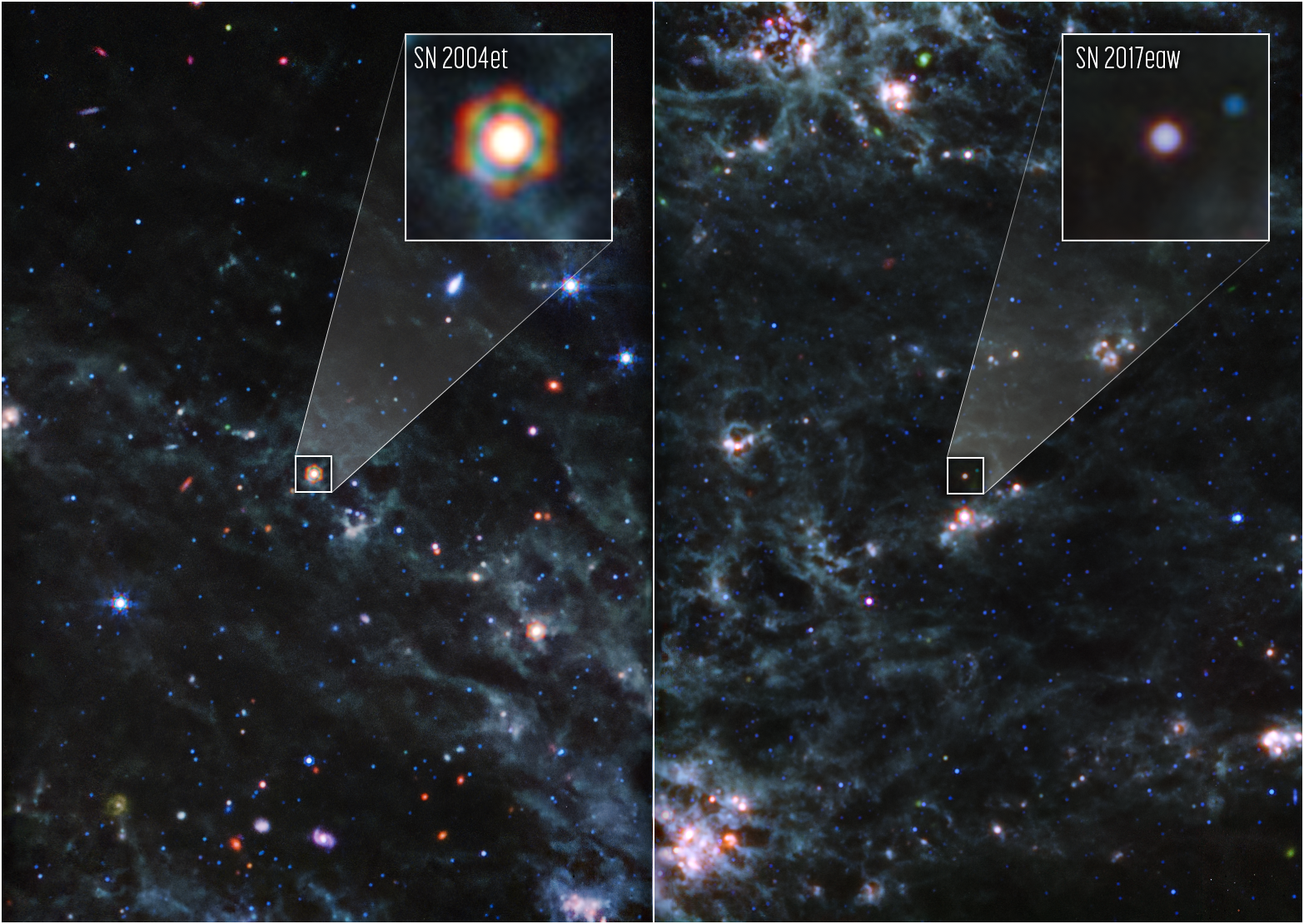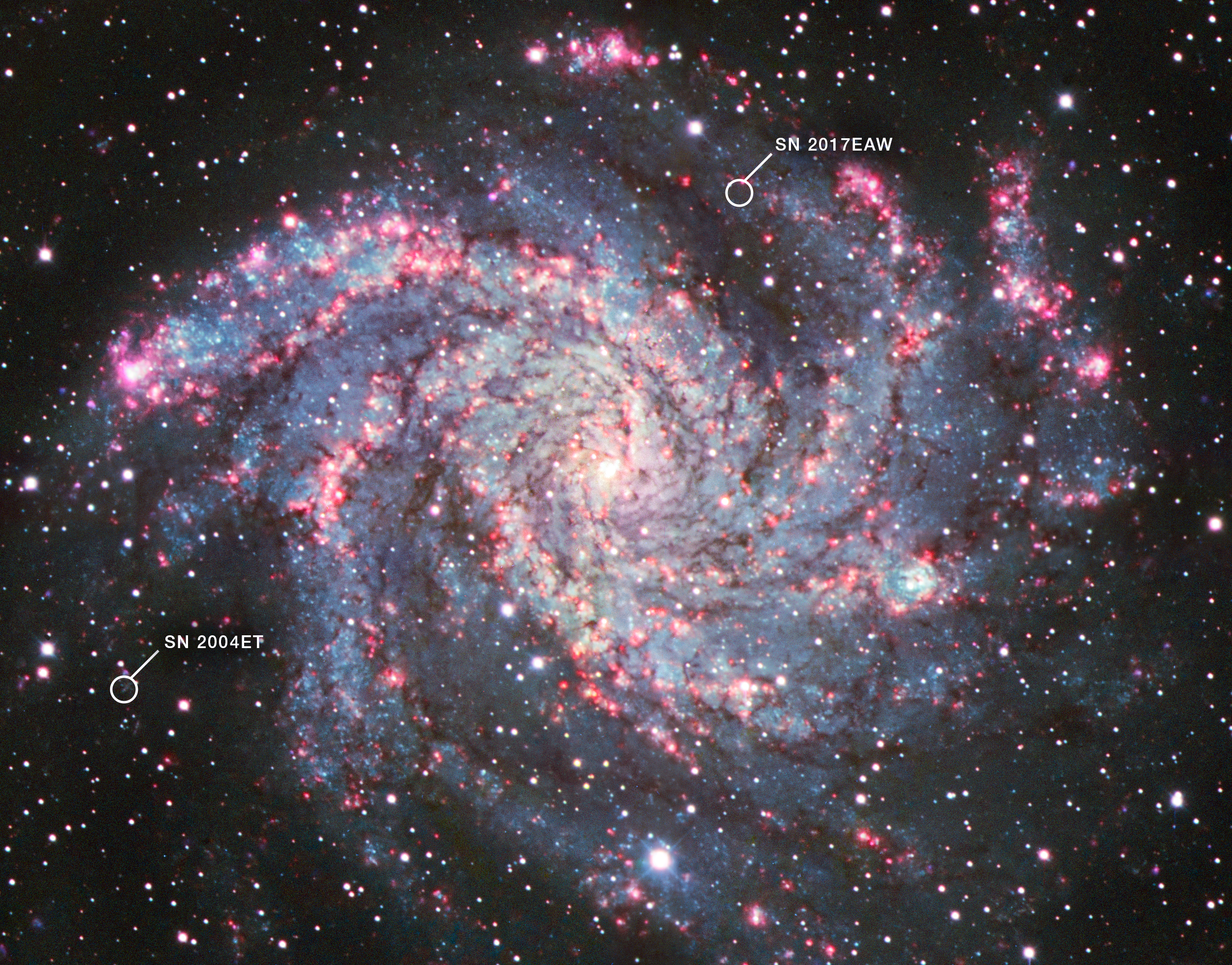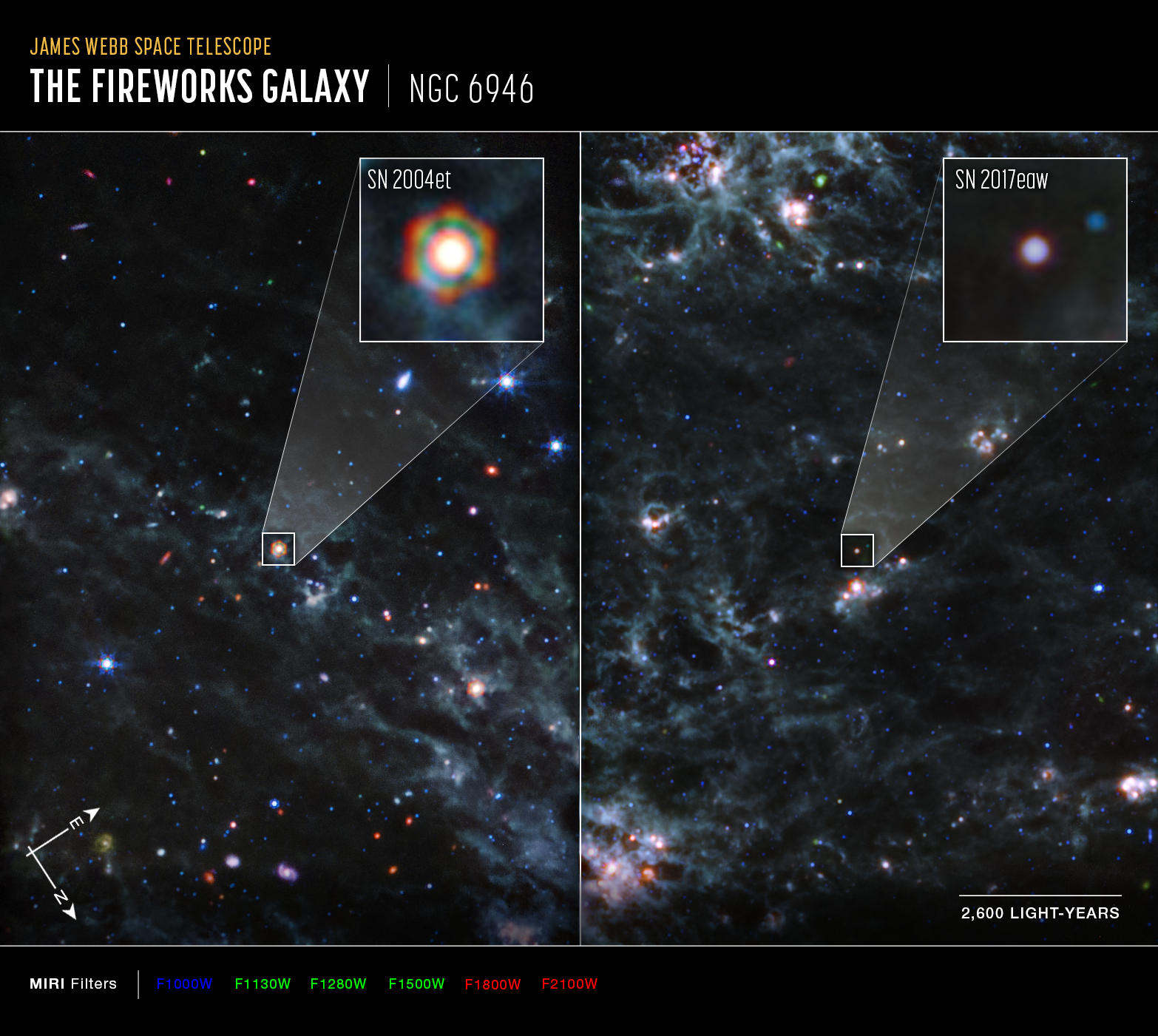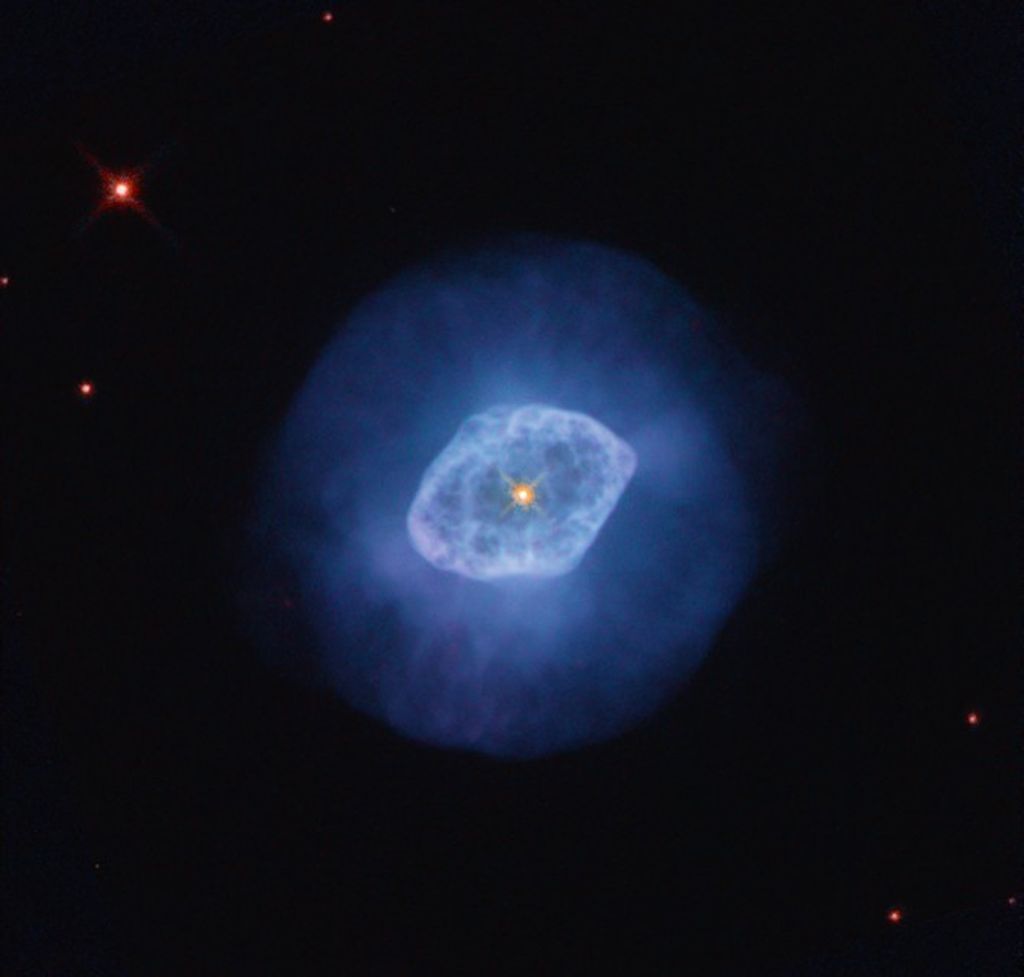1 min read
Dusty Supernovae (MIRI)

Images from NASA’s James Webb Space Telescope’s MIRI (Mid-Infrared Instrument) reveal large amounts of dust within two Type II supernovae, Supernova 2004et (SN2004 et) and Supernova 2017eaw (SN 2017eaw), located 22 million light-years away from Earth in spiral galaxy NGC 6946. The large amounts of dust found around these supernovae support the theory that supernovae played a key role in supplying dust to the early universe.
SN 2004et is highlighted in the left panel of this image, and SN 2017eaw in the right panel. Webb’s exquisite sensitivity and capability to observe in the mid-infrared allow it to detect the cooler dust that survived the internal shocks reverberating in the aftermath of the dying stars’ explosions. In these images, the bluer colors indicate hotter dust, while red is cooler dust. The hexagonal shape of SN 2004et in Webb’s image is an artifact of the telescope’s mirror and struts — when the bright light of a point source is observed, the light interacts with the sharp edges of the telescope, creating diffraction spikes.
The new Webb discovery is the first breakthrough in the study of dust production from supernovae since the detection of newly formed dust in relatively nearby (170,000 light-years) Supernova 1987A.
In SN 2004et, researchers using Webb found more than 5,000 Earth masses of dust, rivaling the amount of dust found in SN 1987A. That’s why SN 2004et appears brighter and redder in Webb images. SN 2017eaw is currently hotter, with less dust (bluer in Webb observations), but in 13 years, researchers expect it to appear similar to how SN 2004et does now.
In these images, blue, green, and red were assigned to Webb’s MIRI data at 10; 11.3, 12.8, and 15.0; and 18 and 21 microns (F1000W; F1130W, F1280W, and F1500W; and F1800W and F2100W, respectively).
MIRI was contributed by NASA and ESA, with the instrument designed and built by a consortium of nationally funded European Institutes (the MIRI European Consortium) and NASA’s Jet Propulsion Laboratory, in partnership with the University of Arizona.
About the Object
- R.A. PositionR.A. PositionRight ascension – analogous to longitude – is one component of an object's position.20:34:52.30
- Dec. PositionDec. PositionDeclination – analogous to latitude – is one component of an object's position.+60:09:14.00
- ConstellationConstellationOne of 88 recognized regions of the celestial sphere in which the object appears.Cygnus
- DistanceDistanceThe physical distance from Earth to the astronomical object. Distances within our solar system are usually measured in Astronomical Units (AU). Distances between stars are usually measured in light-years. Interstellar distances can also be measured in parsecs.22.5 million light-years away
- DimensionsDimensionsThe physical size of the object or the apparent angle it subtends on the sky.Image is about 2.9 arcminutes across (~19,000 light-years)
About the Data
- Data DescriptionData DescriptionProposal: A description of the observations, their scientific justification, and the links to the data available in the science archive.
Science Team: The astronomers who planned the observations and analyzed the data. "PI" refers to the Principal Investigator.This image was created with Webb data from proposal: 2666 (O. Fox).
- InstrumentInstrumentThe science instrument used to produce the data.NIRCam
- Exposure DatesExposure DatesThe date(s) that the telescope made its observations and the total exposure time.20 Sept 2022
- FiltersFiltersThe camera filters that were used in the science observations.F1000W, F1130W, F1280W, F1500W, F1800W, F2100W
- Object NameObject NameA name or catalog number that astronomers use to identify an astronomical object.NGC 6946, SN2004et, SN2017eaw
- Object DescriptionObject DescriptionThe type of astronomical object.Dusty supernovae in spiral galaxy NGC 6946
- Release DateJuly 5, 2023
- Science ReleaseWebb Locates Dust Reservoirs in Two Supernovae
- CreditNASA, ESA, CSA, Ori Fox (STScI), Melissa Shahbandeh (STScI); Image Processing: Alyssa Pagan (STScI)

These images are a composite of separate exposures acquired by the James Webb Space Telescope using the MIRI instrument. Several filters were used to sample wide wavelength ranges. The color results from assigning different hues (colors) to each monochromatic (grayscale) image associated with an individual filter. In this case, the assigned colors are: Blue: F1000W, Green: F1130W+ F1280W + F1500, Red: F1800W + F2100W

Related Images & Videos

NGC 6946 (Kitt Peak National Observatory)
This image from the Kitt Peak National Observatory of NGC 6946 contextualizes the locations of Supernova 2004et and Supernova 2017eaw within the galaxy. Scientists using NASA’s James Webb Space Telescope’s MIRI (Mid-Infrared Instrument) found large amounts of dust within two...

Dusty Supernovae (MIRI Compass Image)
This image of NGC 6946 highlighting two supernovae, SN 2004et and SN 2017eaw, by Webb’s MIRI (Mid-Infrared Camera), shows compass arrows, scale bar, and color key for reference. The north and east compass arrows show the orientation of the image on the sky. The scale bar is...
Share
Details
Laura Betz
NASA’s Goddard Space Flight Center
Greenbelt, Maryland
laura.e.betz@nasa.gov
NASA, ESA, CSA, Ori Fox (STScI), Melissa Shahbandeh (STScI)
Alyssa Pagan (STScI)






























